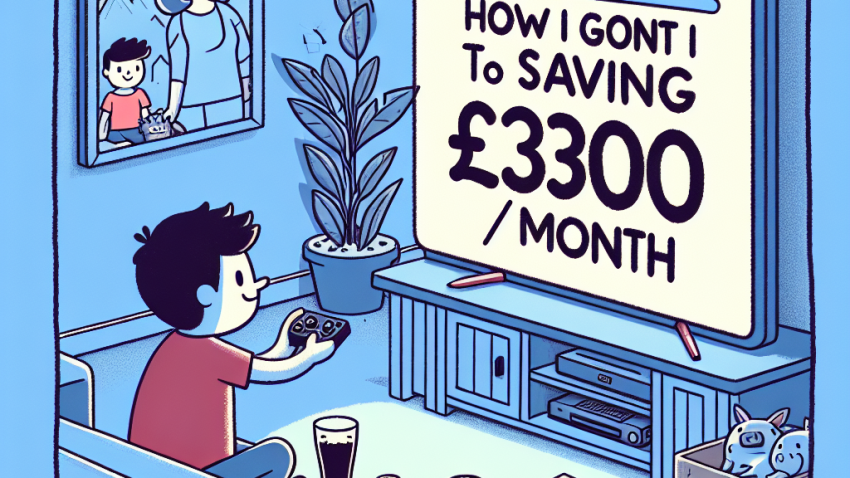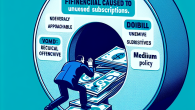
How I Went From Clueless to Saving £300/Month
How to Create Your First Monthly Budget Without Losing Your Sanity
If you’re like most people dipping their toes into the world of personal finance, the word “budget” triggers an eye twitch. You imagine spreadsheets, calculators, and giving up that overpriced caramel oat milk latte you love. But fear not! Whether you’re fresh out of college or finally tired of living paycheck-to-paycheck, building your first monthly budget doesn’t have to feel like pulling teeth. In fact, it can be a downright empowering process—and dare I say, kind of fun (OK, maybe just for us finance nerds).
I’m Thomas “Tom” Bradley, your friendly neighborhood finance coach, and today I’ll show you how to create your first monthly budget with zero headaches and maybe even a chuckle or two. Let’s take the stress out of cents and get your financial house in order!
Step 1: Know What Comes In
Your Income is the Foundation
Before we dive into slicing and dicing your expenses, you need to be brutally honest about your income. That means net income—not your salary before taxes, not what you wish it was, not what your uncle Bob says you’re worth. We’re talking about what lands in your bank account every month.
Here’s what to include:
- Your take-home pay from your job
- Freelance or side hustle income
- Any government benefits or stipends
- Cash gifts, alimony, etc. (if they occur regularly)
Total all of this. This is your monthly income. Simple math, no PhD required.
Step 2: Know What Goes Out
Track Your Expenses Like a Detective Solving a Crime
This is where many people get overwhelmed, so let’s break it down. You need to figure out exactly where your money goes. No shame—just facts.
I recommend reviewing your last two to three months of:
- Bank statements
- Credit card statements
- Receipts (if you’ve been keeping them—and if you have, we should be friends!)
Divide your expenses into these two categories:
- Fixed expenses: Same amount each month—rent, insurance, subscriptions, etc.
- Variable expenses: Changes month-to-month—groceries, eating out, utilities, gas
Now breathe. You might find you’ve been spending $300/month on Uber Eats or $80 on random Amazon “must-haves.” Awareness is the first step to change!
Step 3: Set Your Financial Priorities
What Matters to You?
Before we start budget-cutting like a chef with a vendetta, let’s identify what’s important to you. Is it saving for a trip to Europe? Paying off student loans? Building an emergency fund? Or just not running out of money three days after payday?
Create a short list of your top 2–3 goals. These will guide how you allocate your money in the next step. Remember: every good budget starts with intention, not restriction.
Step 4: Build the Actual Budget (Finally!)
The Zero-Based Budget Method
I’m a fan of the zero-based approach. It simply means you give every dollar a job. If you bring in $3,000 a month, you’ll allocate every cent until there’s nothing “left over.” This doesn’t mean you spend every penny—it means you assign it somewhere.
Here’s a basic template you can start with:
- Housing (Rent/Mortgage): 25–35%
- Utilities: 5–10%
- Food (Groceries and Dining Out): 10–15%
- Transportation: 10–15%
- Savings: 10–20%
- Debt Repayment: 5–10%
- Personal/Leisure: 5–10%
The above are just guidelines. You don’t need to buy into one-size-fits-all rules. Adjust where necessary. But remember: your budget should reflect your goals and keep you in the black (that’s accountant-speak for “not broke”).
Step 5: Track and Tweak
Your Budget is a Living, Breathing Organism
Too many people create a budget, save the file, pat themselves on the back, and then never look at it again. That’s like planning a road trip and throwing away the map.
Use a spreadsheet, an app (I like YNAB or EveryDollar), or even pen and paper. The method doesn’t matter—consistency does. Track:
- What you planned to spend
- What you actually spent
And then… adjust. If you’re constantly underestimating your grocery bill, raise it. If you’re crushing your entertainment budget, shift some funds to savings. Budgets aren’t written in stone—they’re etched in pencil (and maybe spreadsheet formulas).
Step 6: Celebrate Small Wins
Don’t Forget to Be Proud
Budgeting isn’t about deprivation, it’s about control. And taking the first step—reading this article and getting started—is already an achievement. So reward yourself (reasonably). Hit your savings goal? Treat yourself to a nice dinner. Paid off a credit card? Hoorah! Time for a little celebration.
Common Pitfalls to Avoid
Don’t Let These Trip You Up
- Guessing your expenses. “I think I spend about $200 on groceries” is not the same as knowing.
- Skipping savings. Pay yourself first—always.
- Forgetting irregular expenses. Car registration, gifts, annual subscriptions—budget for them monthly by setting aside a little each time.
- Being too strict. Leave room for life. Budgets should be sustainable, not soul-crushing.
Final Thoughts from Tom
Look, creating your first budget isn’t about becoming a financial robot. It’s about understanding your habits, controlling your money instead of letting it control you, and building a future you’re excited about. Don’t worry if it’s not perfect right away. Budgeting is a skill, and like any skill—from riding a bike to making a perfect grilled cheese sandwich—it gets easier with practice.
If you ever feel overwhelmed, stressed, or tempted to give up and go full YOLO again, take a breath and come back to this: Your budget is your freedom plan, not your prison sentence.
Need help or have questions? Feel free to reach out to us here. Or learn more about our mission and why I’m passionate about helping finance beginners like you.
Now go forth and budget with confidence. Tom’s got your back.









Leave a Reply